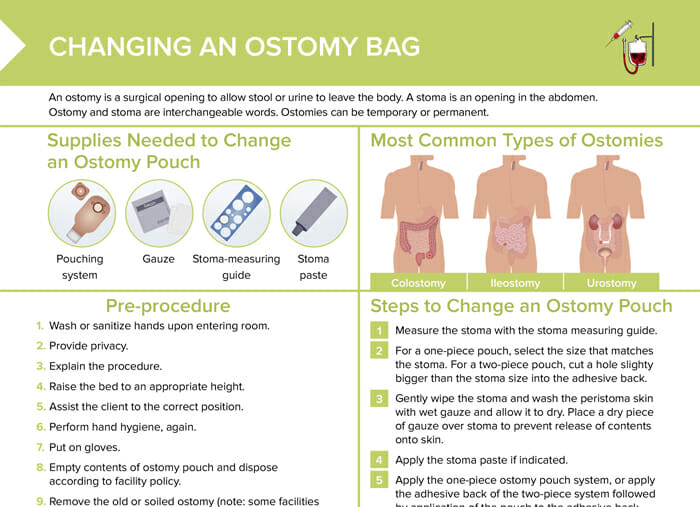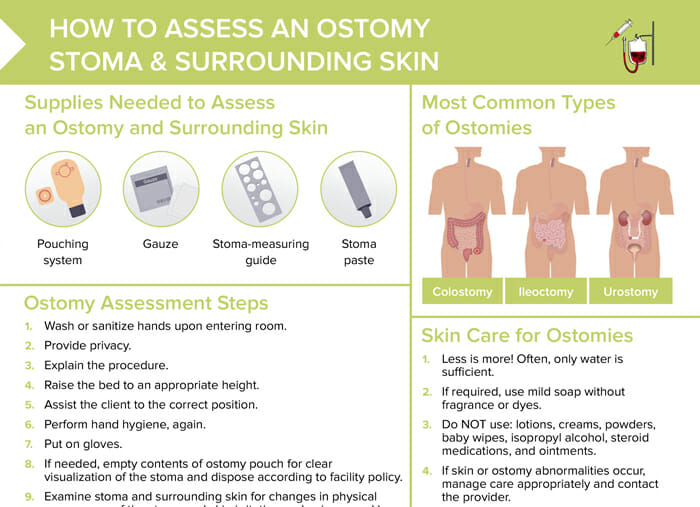Common types of ostomies
- Colostomy
- Ileostomy
- Urostomy
Assessment of stoma
Supplies needed for ostomy assessment
- Pouching system
- Gauze
- Stoma-measuring guide
- Stoma paste
Stoma assessment steps
- Wash or sanitize hands upon entering room.
- Provide privacy.
- Explain the procedure.
- Raise the bed to an appropriate height.
- Assist the client to the correct position.
- Perform hand hygiene, again.
- Put on gloves.
- If needed, empty contents of ostomy pouch for clear visualization of the stoma and dispose according to facility policy.
- Examine stoma and surrounding skin for changes in physical appearance of the stoma and skin irritation and pain caused by leaking of contents from poor bag adherence.
- Assess ostomy drainage for any changes in odor, color, discharges (such as blood or pus).
- Remove and replace the ostomy bag, if required.
How to document stoma appearance
Key points to cover in stoma assessment documentation include:
- Color (pink, red, purple…)
- Size (dimensions or diameter)
- Shape (round, oval, irregular)
- Protrusion (flush with the skin, protruding, retracted)
- Condition of the surrounding skin (intact, red, irritated…)
- Output (type and consistency)
- Any abnormalities (swelling, bleeding…)
- Of course, as always, date, time, your signature, and any specifics required by your facility’s protocols.
Normal stoma appearance
A healthy stoma typically appears pinkish-red, moist, and may have some mucus.
Unhealthy stoma appearance: examples
- Stoma blockage: may appear swollen and discolored, may cause pain or decreased output → immediate attention required!
- Stoma prolapse: extends outward more than usual and appears elongated, may lead to obstruction or strangulation
- Stoma retraction: sits below the skin level, making it difficult for the appliance to adhere properly and increasing the risk of skin irritation and leakage
- Skin irritation: redness, rash, or broken skin around the stoma site
- Leakage: can lead to skin irritation, requires immediate refitting
- Necrosis: indicated by dark red, purple, or black coloration of the stoma → medical emergency!
How to clean a stoma: skin care
General tip: Less is more! Often, only water is sufficient.
- If required, use mild soap without fragrance or dyes.
- Do NOT use: lotions, creams, powders, baby wipes, isopropyl alcohol, steroid medications, and ointments.
- If skin or ostomy abnormalities occur, manage care appropriately and contact the provider.
- Ensure the client understands ostomy and skin care.

